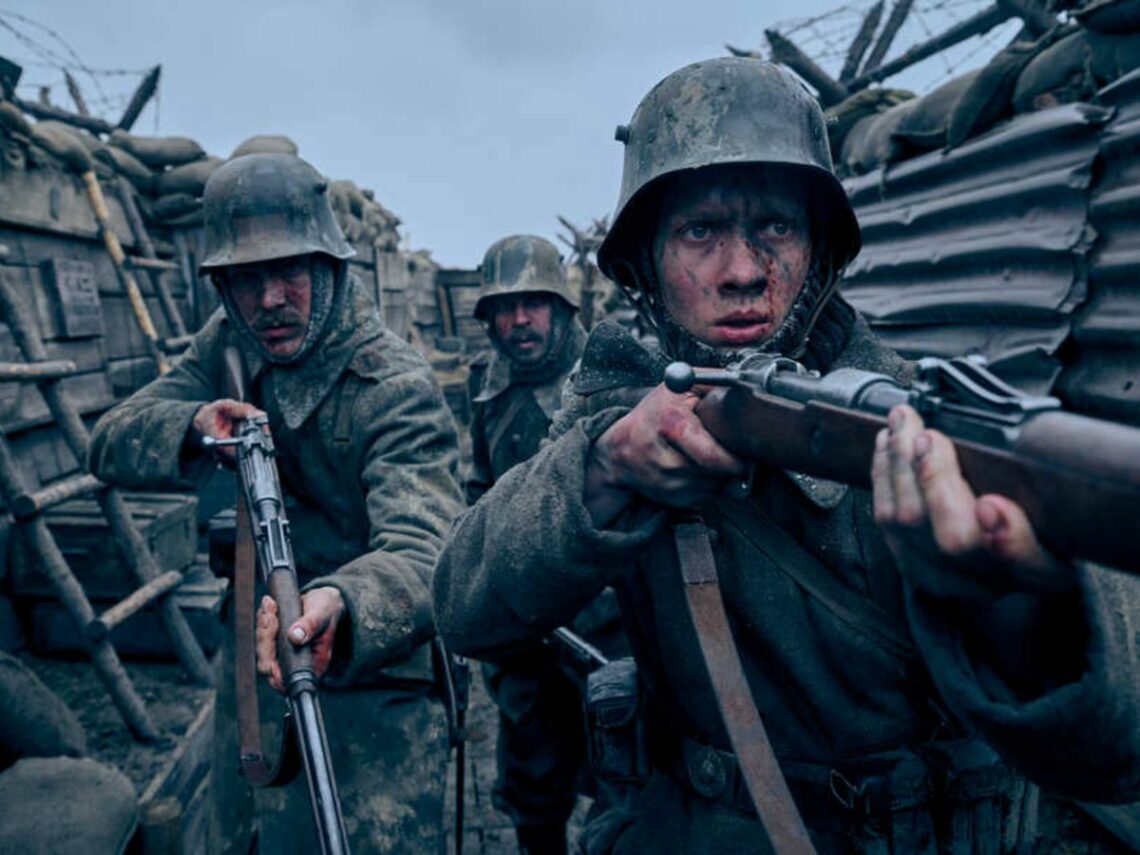Edward Berger’s German-language adaptation of Erich Maria Remarque’s All Quiet on the Western Front, itself a remake of the 1930 ‘Best Picture’ winner of the same name, is a far different beast from the familiar fodder of Hollywood war flicks, possessing a tone devoid of cinematic pomposity. This immersive cinematic journey haunts its viewer, giving a taste of war that lingers with nightmarish authenticity.
Loyal to the Nobel Peace Prize-nominated novel, Berger’s film tells the story of a teenage boy who enlists in the Imperial German Army alongside his school friends, buzzing with exuberance like the fresh-faced protagonists of Bernhard Wicki’s The Bridge. Though, as the reality of war sets in and the constructed fantasy quickly dissipates, the friends find themselves stuck in the brutality of one of history’s most violent conflicts.
Billed, like all war films, as an immersive drama riddled with bloodshed, All Quiet on the Western Front sets itself apart from its cinematic kin by taking more creative license from the industry’s finest horror films. Comparisons to the mental and physical degradation of Come and See’s protagonist are obvious, with the central characters of both films going through an odyssey of hardship to scrape to survival.
Evidently proficient in its cinematic ambition, the grand scale of the battle sequences is the film’s most clear asset, creating a cauldron of fear, trepidation and hopelessness that pervades the story like a thick fog of horror. Indeed, war movies have a moral obligation to depict war as viscerally terrifying as it truly is, translating its frantic brutality with immersive set pieces, but it’s in the minute details where All Quiet on the Western Front really excels.
A blood-stained uniform of a fallen soldier washed, repaired and repurposed. The nauseating screams of the utterly hopeless. A deceased corpse splattered with the soup of yellow mud. Berger’s focus on the personal dread of war turns his otherwise conventional movie into a film that borders on horror, with Volker Bertelmann’s dramatic industrial score tying this together with terrifying vigour.
Bertelmann’s ominous three-note beat, created with his grandmother’s old harmonium, becomes the film’s ticking clock, appearing during repeated moments of danger before ebbing away again like the grim reaper choosing to delay his wrath. Suffusing into the fabric of the film, it is with the help of the score that the battlefield becomes more of an ethereal plane, where tanks feel more like perplexing, shadowy monsters rather than feats of human engineering.
All this cinematic wonder is packaged with a frank and smart adaptation that well translates the disparity between the dirtied soldiers and their pristine superiors. So devoid of hope, happiness and humanity, this film is, after all, the greatest anti-war story ever written.
